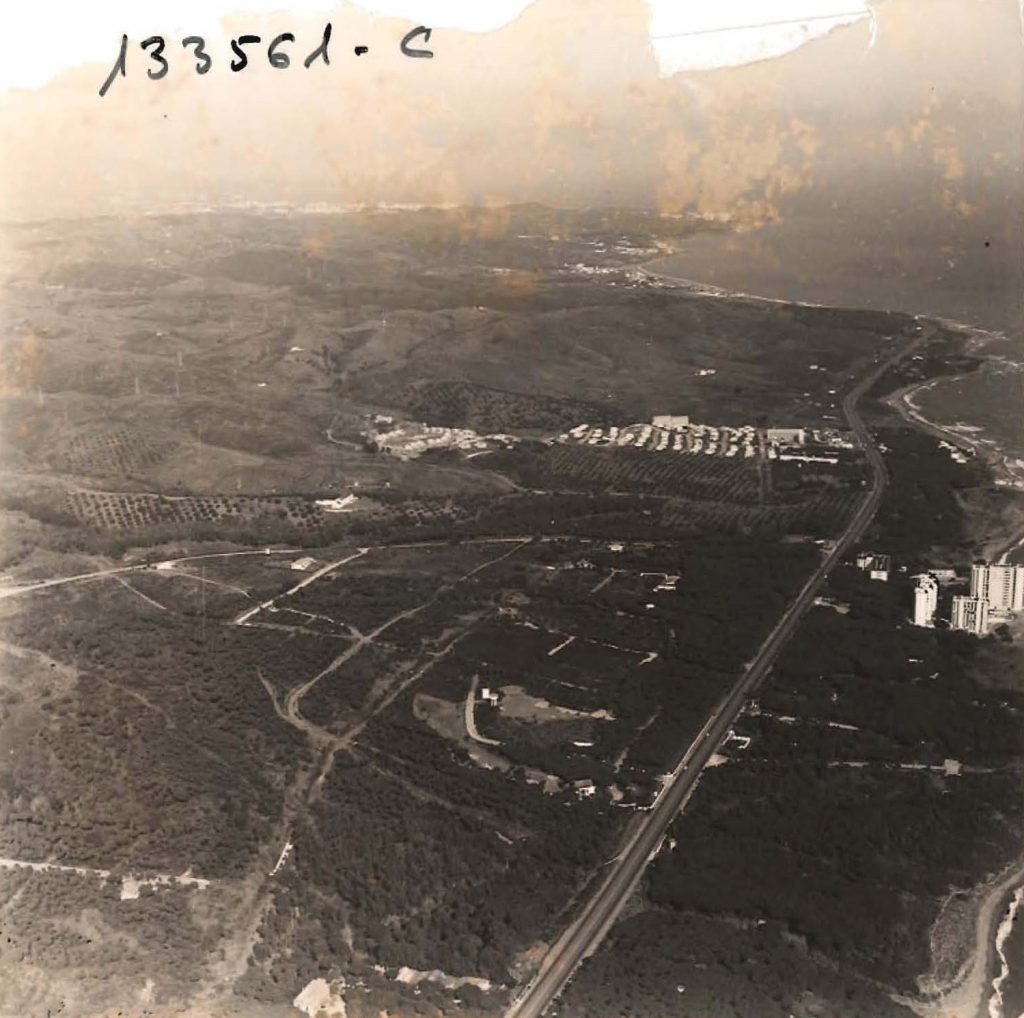– Page 2 –
 While the towers were used for advance warning of Moorish invasions or of pirates or Berber incursions -the signals were made with smoke during the day, with fire at night- the fort-house was a refuge with immensely thick walls and with embrasures from which to fire. The incumbents could also watch without being seen: the building was camouflaged by vegetation and ochre paint on its upper part, although the bottom section was painted in the traditional white of Andalucía. The walls were also protection against inclement weather, and the fort-house was where meals were prepared and food stored in those restive times.
While the towers were used for advance warning of Moorish invasions or of pirates or Berber incursions -the signals were made with smoke during the day, with fire at night- the fort-house was a refuge with immensely thick walls and with embrasures from which to fire. The incumbents could also watch without being seen: the building was camouflaged by vegetation and ochre paint on its upper part, although the bottom section was painted in the traditional white of Andalucía. The walls were also protection against inclement weather, and the fort-house was where meals were prepared and food stored in those restive times.
That fort-house, the place that is now El Campanario, was the emblematic building that presided over the construction of Sitio de Calahonda. Under this symbol, a reference to a time of constant menace, a completely new era was started, one of an ever-growing rhythm of attractive buildings that would turn the coast of Málaga into a welcoming place. That was the essential concept my father started and to which I was entirely dedicated for more than a quarter century.
 Before making the decision to buy, my father visited several ‘fincas’, or estates. His experience pointed to Calahonda because of its beauty and location on the lower part of the coast, among pine trees, and because it rose in soft gradients to a height of 300 m. above sea level. Wherever they chose, the eventual proprietors would have magnificent views of the sea. While the Orbaneja family bought a part of the land and agreed to develop the whole, the Vandulkens provided the rest of the land. My father also bought some 120,000 sq. m. of beach frontage from General Rodríguez de Lecea, about 40,000 of which is now Puerto Cabo Pino.
Before making the decision to buy, my father visited several ‘fincas’, or estates. His experience pointed to Calahonda because of its beauty and location on the lower part of the coast, among pine trees, and because it rose in soft gradients to a height of 300 m. above sea level. Wherever they chose, the eventual proprietors would have magnificent views of the sea. While the Orbaneja family bought a part of the land and agreed to develop the whole, the Vandulkens provided the rest of the land. My father also bought some 120,000 sq. m. of beach frontage from General Rodríguez de Lecea, about 40,000 of which is now Puerto Cabo Pino.
My role as Managing Director was to consolidate the concept with which we had begun the project: to focus life around La Naranja Club and thus create a nucleus that would allow for development and expansion of the urbanisation from there. For those who are reading this at the beginning of the XXI Century, let me give you a perspective: the only thing that existed in the area at the time was the Alhamar Hotel, one of the oldest on the Costa del Sol. One of my first preoccupations -in time, preoccupations would be put on a waiting list- was the urbanisation’s water supply. At first, a few wells were drilled on Calahonda’s own land, but they were not enough. One of my first tasks was to pump water from the well where the children’s playground is today, to a storage tank where later was built Monteparaíso. From here the water was distributed to the first phase of the future complex. As the supply was insufficient, and the drought in ’68 made the situation worse, we had to bring water in by tanker lorries.
However, in 1968 there were projects for an adequate supply of water through the general development plan for the Costa del Sol. The supply became adequate when the Río Verde reservoir was built and the Confederación Hidrográfica del Sur laid the necessary pipes. At Calahonda, we were supplied via a network of pipes, which we helped lay, and the problem was finally solved. The wells we had drilled dried out gradually, except for the one on the beach road, Calle de la Playa. Another of the basic problems was the supply of electricity. The tangled web of cables that had built up over time had to be removed so that a proper cable system could be installed from the outer edge of the urbanisation, including the transformers and low voltage cables necessary to complete the infrastructure. At a time when the environment was not the priority it is today, we signed an agreement with Icona to reforest no less than 120 hectares with pine trees. The high density of the pines that already existed was causing many of them to die, and this, added to an epidemic disease called ‘barrenilla’, or drill beetle, made it necessary to carry out an extensive programme of culling and cleaning up. This kind of protection, needed periodically in this type of forest, continued to be carried out, so much so that Sitio de Calahonda is still known today for its pine forest. If the work we carried out at our urbanisation had been done all over the Costa del Sol, chances are that it would be much more attractive than it is today, at least from the environmental point of view. Calahonda thus became a positive pioneer in an aspect that was never taken into account else where.
 +34 695 223 964
+34 695 223 964

